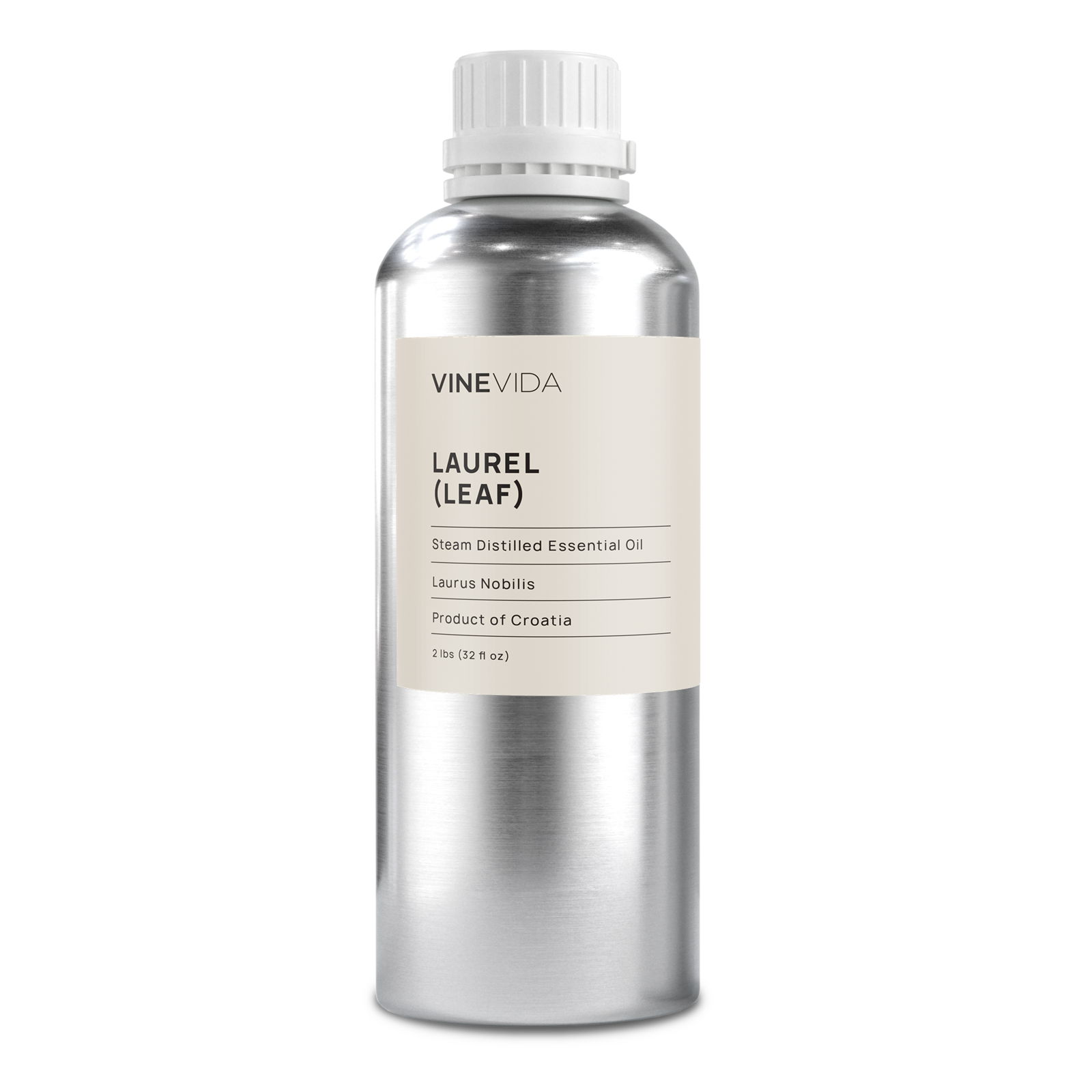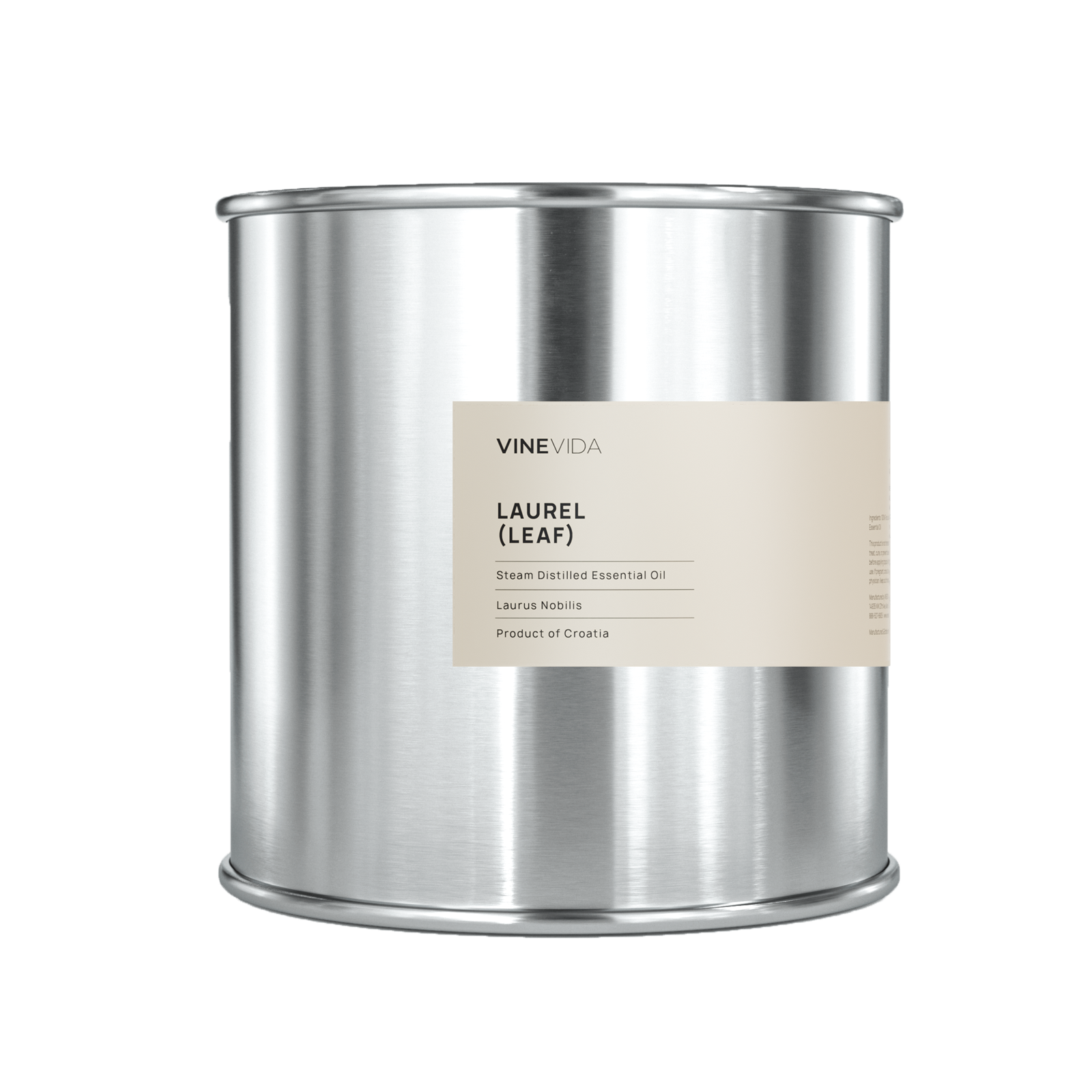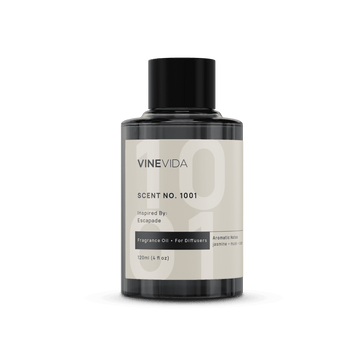Laurel Essential Oil: Uses, Benefits, and Blends
Gorgeous, fresh, and bright laurel essential oil can be used for digestive health, to support respiratory health, and as an uplifting tonic. A darling of the ancient world, the laurel tree has always symbolized success.
Scientific Name: Laurus Nobilis
Origin: Croatia
Plant Part: Leaves
Scent: Herbaceous, clinical, sharp, green, leafy.
Color: Clear to pale yellow.
Consistency: Thin
Perfumery Note: Middle
Initial Aroma Strength: Pervasive
Extraction Method: Steam distillation
Suitable Blending Oils: Herbaceous fragrances like eucalyptus, peppermint, basil, flowers like lavender or chamomile, resins, spices, and woods.
Breaking Down the Laurel Essential Oil’s Chemical Components
Between a third to a half of the chemistry of laurel essential oil is composed of 1,8 cineole. This constituent is a powerful antimicrobial and has superb benefits for supporting respiratory health.
There are also significant quantities of alpha and beta-pinene.
These two are antimicrobial, uplifting, and analgesic.
Laurel essential oil also contains small amounts of sabinene, linalool, and alpha-terpinyl acetate. Sabinene is antifungal and anti-inflammatory. Linalool is anti-inflammatory, analgesic, and soothing. Alpha terpinyl acetate is being researched as a possible drug target for Alzheimer’s disease.
Laurel essential oil also contains roughly 4% methyl eugenol and 1% eugenol.
Methyl eugenol has insecticidal properties and is also proven to have analgesic skills. Eugenol is a powerful antiviral and bactericidal agent. However, methyl eugenol may also have carcinogenic properties in large amounts, so any oil containing this constituent also has safety issues surrounding it. In this case, to avoid any possible negative aspects of methyl eugenol, Tisserand and Young suggest a maximum dilution of 0.5%.
Synonyms of Laurel Essential Oil
Bay Laurel, Bay Leaf Essential Oil.
Historical Uses of Laurel Essential Oil
Laurus nobilis L. belongs to the Lauraceae family, which comprises approximately 2500–3500 species. Confusingly, laurel oil does not come from the laurel bush with the lime green glossy leaves, but rather, it comes from the culinary bay tree. Bay leaves are a staple of any good kitchen, adding flavor and digestive aid to stews, fish, and meats.
The Ancient Laurel
The bay laurel tree was one of the most prized plants of the ancient world. Mythology describes how the god, Apollo, desired a nymph, Daphne, who would not accept his advances. The god slew her bridegroom, so to help her escape him, the goddess Gaia turned her into a laurel tree, which (outrageously) he still embraced when he discovered her. He crowned himself with a wreath of laurel leaves and declared it to be sacred to him. Ever since, it has been associated with triumph, success, and victory.
The victors of the Olympic Games and other important tournaments were crowned with laurel leaves. Statues of heroes were also adorned with it. Today, the term is still synonymous with excellence and is found within the word “laureate”, as in Poet Laureate and Nobel Laureate. After a graduate has defended their thesis, they also wear a crown of bay leaves. Likewise, the qualification “baccalaureate” means laurel berry. Then when all is accomplished and one feels content with one’s lot and imagines there is no longer a need to strive, a person is described as “resting upon their laurels”.
Finally, the Oracle of Delphi would wave laurel leaves to signal to Apollo that she was ready to receive his prophecy.
Its Latin name speaks to its importance in the ancient world. Nobilis means noble and famous.
Ancient Uses of Laurel Essential Oil
Before I begin, I should clarify that since we have no proof that distillation was invented till the 12th century, so not actually laurel essential oil, but rather laurel leaves used as teas, etc.
Pliny
The Romans called it “the plant of the good angels,” and in his CE 79 work Naturalis Historia, Pliny recommends using leaves from the bay tree for over sixty different complaints. Notably, he recommends it as an emetic (to make you sick, to rid the system of toxins) as a treatment for phlegm, to guard against bugs and germs and to bring on a woman’s periods.
In De Materia Medica, Dioscorides wrote:
The green leaves are gently, grated, and hung up to heal wasps and bee stings. They can also relieve any inflammation when handled with barley groats and bread, but drunk they complain the stomach and provoke vomiting. The fruits (laurels) are more warming than the leaves; they therefore work well in the leak with honey or sweet wine in phthisis orthopnea, and rheumatism of the breast. With wine, they are drunk against scorpion stings, and they also eliminate the white patches of skin. The squeezed juice helps with earache and hearing loss when it is drizzled with old wine and rose oil. It is also mixed with ointments and warming and distributing envelopes. But the bark of the root smashes the stone and kills the fruit; it is also salutary to the liver sufferers when it is drunk in the gift of three Obolen with spiced wine.
Culpeper
Culpeper suggested bathing in a decoction of bay leaves and berries to alleviate symptoms of menopause and gyne problems which he refers to as “troubled with the mother, or the diseases thereof”.
He prescribes giving seven leaves to women in slow labor to speed things along. Because of its strength as a uterine tonic, Culpepper suggests avoiding it in the main part of the pregnancy “lest they procure abortion.”
He also associates it with magic, and protection against devilry which is reflected in a famous contemporaneous play. In Richard II, Shakespeare symbolized the king's death using withering bay leaves.
We should also note that it is the primary ingredient in Aleppo Soap, an extremely ancient recipe dating back over two millennia, which is famous for being extremely gentle and good for sensitive skin such as eczema.
Laurel oil has always been prized in perfumery, and previously laurel berry oil was also popular, however, it fell out of favor because laurel berry essential oil was prone to causing skin irritation. To clarify, the laurel berry caused irritation, not laurel essential oil!
Antimicrobial Actions Of Laurel Essential Oil
Most important is laurel essential oils' abilities as an antimicrobial agent and these come predominantly from its high levels of 1,8 cineole. However, studies show that laurel essential oil has more powerful abilities than when 1,8 cineole is used alone. (Caputo, 2017)
This aspect is being well researched for so-called green technologies to preserve retailed food more naturally. Laurel essential oil slows the oxidation of fats (Mello da Salviera, 2014) and prevents the growth of mold spores.
It is active against E. coli and salmonella (Simic, 2004).
Laurel Essential Oil For Coughs And Colds
Personally, with the high levels of 1,8 cineole, I like to use it for coughs and colds, especially for chest infections. However, this constituent is not great for kids. (See precautions.) Laurel essential oil is only really appropriate for adults.
Laurel Essential Oil for Digestion
One drop of laurel essential oil in a tablespoon of carrier oil can be lovely if you are suffering from indigestion, heartburn, or bloating. Massage it over the abdomen or area of discomfort.
Using Laurel Essential Oil in Sitz Baths
A couple of drops of laurel essential oil are helpful in sitz baths for uterine and bladder disorders. This echoes a two-thousand-year-old recommendation by Dioscorides. Consider using Laurel essential oil to soothe period pains, cystitis, hemorrhoids, or prolapses.
Always dilute your laurel essential oil into a tablespoon of carrier oil before adding to the water.
Laurel Essential Oil and The Nervous System
Laurel Essential Oil is being researched as an anti-epileptic, a possible therapeutic for Parkinsonism and neuralgia, after its usage in traditional medicine. (Khorasani, 1992) Its success for these conditions seems to be, in part, down to linalool’s sedative effect on the nervous system. (Caputo, 2015)
Laurel Essential Oil and The Emotions
Laurel essential oil is uplifting and motivating.
It is an excellent oil to use if you have a big challenge ahead (particularly academically) and you worry you might not be up to the job. Being sacred to Apollo, this applies to any kind of logical thinking, such as math or science, but also music, the arts, and poetry.
Laurel essential is the essence of success, and it seems to take the mind to the place where your brain already thinks you have won.
Precautions for Using Laurel Essential Oil
Due to its high levels of 1,8 cineole, laurel essential oil is not recommended for use on children under the age of six. 1,8 cineole slows respiration.
Its strong action on the uterus also makes it unsuitable for use in the first 37 weeks of pregnancy.
Its methyl eugenol content means it should be used in a maximum dilution of 0.5%.
Laurel Essential Oil Blends: DIY Recipes
Chesty Cough Laurel Essential Oil Recipe
- 1 tbsp Grapeseed Carrier Oil (Vitis Vinifera)
- 1 drop Laurel Essential Oil (Laurus Nobilis)
- 1 drop Cinnamon Leaf Essential Oil (Cinnamomum Verum)
- 1 drop Allspice Essential Oil (Pimenta Dioica)
Method of use: Rub over the chest and back five times throughout the day for a week. If it is difficult to directly access those parts, simply apply liberally to the pulse points of the wrist. This allows the oils access to the bloodstream and they will circulate to the parts of the body that need them.
Safety: Not suitable for use on children. Not suitable for use during the first 37 weeks of pregnancy.
Cystitis Laurel Essential Oil Recipe
- 1 tbsp Grapeseed Carrier Oil (Vitis Vinifera)
- 1 drop Laurel Essential Oil (Laurus Nobilis)
- 5 drops Tea Tree Essential Oil (Melaleuca Alternifolia)
- 2 drops Cypress Essential Oil (Cupressus Sempervirens)
Method of Use: Add to water and soak in for twenty-five minutes. Soak twice a day for a week, using new water and oils each time.
Safety: Not suitable for use on children. Not suitable for use during the first 37 weeks of pregnancy.
Why Choose VINEVIDA
At VINEVIDA, we love botanicals and the planet they come from. We believe in stocking the best at affordable prices and supplying to the discerning, which is why we are also members of both the Alliance of International Aromatherapists and the National Association of Holistic Aromatherapy. In recognition of our excellent standard of product, we are proud to hold a 2021 Certificate of Registration as a Cosmetic Products Establishment with the U.S. Drugs and Food Administration.
Our joy at seeing people make beautiful things means we stock from the smallest amounts to the largest. Our bulk essential oils’ prices begin with our smallest essential oil of 10ml to our largest of 396lb, meaning any manufacturing company can afford to stock as many or as few oils as their business can accommodate without running the risk of spoilage of some of nature’s most precious commodities. So why not see if you can save money by buying your Laurel essential oil in bulk? Remember how stable it is proven to be, so as long as you store it carefully, it should last and last.
Don’t forget too; we like to look after our customers with reasonable prices and excellent customer service and reward the loyal ones with money-off discounts over the year.
Conclusion
So, why not check out if you qualify for our loyalty scheme and start saving today with an environmentally friendly choice of oil for skin, hair, massage oils, and soapmaking? Add VINEVIDA Laurel essential oil to your cart today.

You may also like
Recently viewed














 Certificate of Analysis
Certificate of Analysis

















